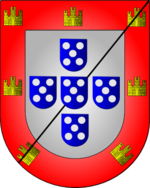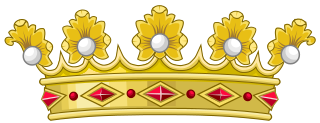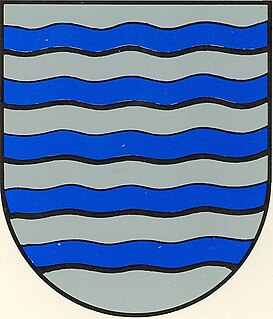

Count of Vila Nova de Portimão (in Portuguese Conde de Vila Nova de Portimão) was a Portuguese title of nobility granted on 28 May 1504, by King Manuel I of Portugal to D. Martinho de Castelo Branco, 2nd Lord of Vila Nova de Portimão.

Dom Manuel I, the Fortunate, King of Portugal and the Algarves, was the son of Ferdinand, Duke of Viseu, by his wife, the Infanta Beatrice of Portugal. His name is associated with a period of Portuguese history distinguished by significant achievements both in political affairs and in the arts. In spite of Portugal’s small size and population in comparison to the great European land powers of France, Italy and even Spain, the classical Portuguese Armada was the largest in the world at the time. During Manuel's reign Portugal was able to acquire an overseas empire of vast proportions, the first in world history to reach global dimensions. The landmark symbol of the period was the Portuguese discovery of Brazil and South America in April 1500.
Don, abbreviated as D., is an honorific prefix primarily used in Italy, Spain, Portugal, Latin America, and the Philippines.

Portimão is a town and a municipality in the district of Faro, in the Algarve region of southern Portugal. The population in 2011 was 55,614, in an area of 182.06 km². It was formerly known as Vila Nova de Portimão. In 1924, it was incorporated as a cidade and became known merely as Portimão. Historically a fishing and shipbuilding centre, it has nonetheless developed into a strong tourist centre oriented along its beaches and southern coast. The two most populous towns in the Algarve are Portimão and Faro.
Contents
In 1662, the third count died without issue and this title was inherited by his sister's grandson, Luís de Lencastre (who descended from Infante George of Lencastre, Duke of Coimbra).
Infante, also anglicised as Infant or translated as Prince, is the title and rank given in the Iberian kingdoms of Spain and Portugal to the sons and daughters (infantas) of the king, regardless of age, sometimes with the exception of the [male] heir apparent to the throne who usually bears a unique princely or ducal title. The wife of a male infante was accorded the title of infanta if the marriage was dynastically approved, although since 1987 this is no longer automatically the case in Spain. Husbands of born infantas did not obtain the title of infante through marriage, although occasionally elevated to that title de gracia at the sovereign's command.

Duke of Coimbra was an aristocratic Portuguese title with the level of royal dukedom, that is, associated with the Portuguese royal house, created in 1415, by King John I of Portugal to his 2nd male son, Infante Pedro. Pedro was regent of the kingdom but he was killed in the domestic Battle of Alfarrobeira (1449).
Later, in the 18th Century, due to the 5th count's marriage to Maria Sofia de Lencastre (heiress of the House of Abrantes), the family reunited all the estates and honours within the same House, which became a reference among the Portuguese aristocracy.

The House of Abrantes descends from the ancient and noble Almeida family.





